Aviv Salinas interview – From Cosmic Void to Neon Hearts City
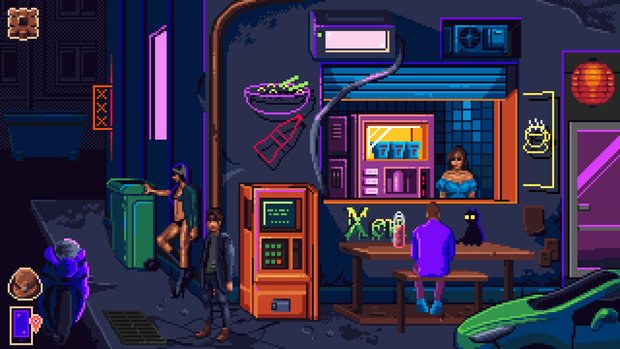
- 0 Comments
Cosmic Void is like an adventure development machine, having cranked out not one, not two, but THREE games last year alone (technically five, but one was a trilogy remake), with another in Neon Hearts City due to arrive in May. As easy as it would be to believe, he’s actually not an advanced AI from the future, but rather Aviv Salinas, a multitalented solo designer who first began making games back in 2019.
At least, I don’t think he’s a machine, but I wanted to find out for sure. So, in the guise of an informal get-to-know-you interview, I recently chatted with this so-called “Aviv” to administer my own Turing Test. Turns out he’s 100% human, all right, and a delightful guest with lots of interesting things to say about his career, and of course his upcoming new game. Behold the Cosmic Void!
Hi, Aviv. Glad to chat with you here at Adventure Game Hotspot. You’ve certainly been keeping us busy with all the games you’re cranking out!
Aviv Salinas: Hey! Great to chat with you, and sorry-not-sorry for the extra workload! Hopefully it's been the fun kind of busy.
I wouldn’t have it any other way. Now, before we get to your games, which many players probably DO know, let’s talk a bit about you, which many probably do not. (Including me.) Tell us a bit about yourself and how you came to be such a prolific indie developer.
I basically started from scratch in late 2019, learning how to draw and code in order to make my first game, Void Breach.
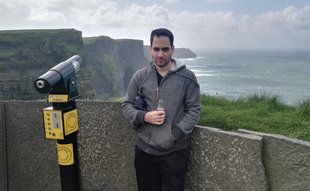
I’d wanted to make games for a long time but was always hesitant to make the jump. I probably should have started as soon as I became aware of the indie scene, way back in the early 2000s, following the progress of then Tierra’s King’s Quest II remake. Pro tip to others like me: make the jump as soon as you can. You’ll never regret doing it early, only that you didn’t do it sooner.
I wanted to do a sci-fi adventure that would look like AGI games (think Space Quest I in terms of art), but have a more modern interface. I’d been inspired by Sierra games, naturally, having grown up on those, but also a bunch of indie game, such as Enclosure, which recently enjoyed a 3D remake by Mausimus.
I’ve also had a short story published in “A Tail of a Mouse,” and co-wrote a novel called No Grave for the Orchids with my dear friend Nurgish Watkins, published under the pseudonym JC Linden.
In my free time, I’m working on my next novel.
FREE time! I don’t know how you manage to fit all that in. What part of the world do you hail from, and what’s the adventure game scene like there?
Free time really is a precious commodity. I’m from Israel, and during the heyday of adventure games, they were quite popular here too. There are a few indie devs from my country who are working on adventure games—one of them is Yakir Israel, who's currently working on Plot of the Druid.
Sure, I know Yakir and love what he's doing with his game. I hope you’re both keeping safe in troubled times. Why “Cosmic Void?”
Well, it was kind of a random chain of events! While I was working on Void Breach, my Twitter handle at the time was just that, “Void Breach.” Then I realized I probably needed a proper developer name. So I figured the new name should be something close, so folks already following me wouldn’t lose track. I started playing around with cool names that could go with “Void,” and after tossing a few around, Cosmic Void just sounded the best. That’s it really!
You’re right about it sounding cool. I referred to you as a “solo” developer earlier, but you’ve collaborated with other indie devs on Blood Nova and The Corruption Within. How do you decide whether to make a game on your own or join forces with other partners for a project?
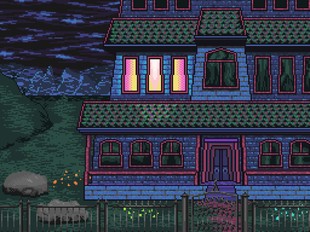
That’s right, on The Corruption Within I had the pleasure of collaborating with the incredibly talented Dave Seaman, aka Captain Disaster, and on Blood Nova I worked with the equally talented Ross Gardner. They both have such a knack for crafting compelling narratives that are full of character and feeling, and it was genuinely great teaming up with them.
I got to know Dave after I became active on Twitter. We started talking about our games, and the idea of collaborating naturally came up in those chats.
As for Ross, I first came across him while browsing reviews on Steam (true story!). We seemed to like similar games, and I remember being struck by his writing style. Later, when we got to talking more, I found out he was publishing a comic on Steam, Half-Life: A Place in the West. Eventually, I showed him some backgrounds I was working on for a future game (Blood Nova—though back then it had a different codename... can’t remember what!). That’s when the idea of collaborating took shape.
I’m not opposed to collaborating again in the future, but right now, I’m really enjoying making my own stories for the games I’m working on.
You obviously wear a lot of hats when making games on your own. Is there a part of production that you like (and dislike) more than others?
I enjoy most aspects of it! I guess marketing is the part I like the least (I think most indie devs feel the same), but honestly, I love everything else—writing the story, coding the games, making the art. It might surprise you, but it can be quite a lonely job (at least until release).
Your earliest adventure games like Void Breach used a very basic, late-80s sort of chunky pixel art, but your more recent games like Twilight Oracle have a more detailed, mid-90s look. Still nostalgically retro, but much more refined. Was that a conscious design choice, or more a case of you developing as an artist?
A bit of both really. When I worked on Void Breach, I was still learning the ropes. So it probably comes across as crude, not just because I was going for that chunky retro look, but because it was literally the first time I’d ever drawn anything. With Twilight Oracle, I felt my style improved. Plus, the goal was to create a game with that 90s vibe while still using pixel art, so that’s a big part of the game’s artistic direction.
How else do you think you’ve evolved as a developer over the years?
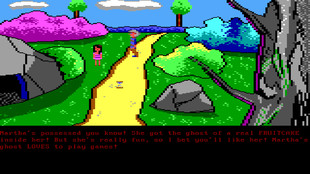
Ah, good question. I think you’re always evolving as a developer. The more you make, the more you learn. You take feedback on board, reflect on what worked (and what didn’t), and try to build on that. I’ve been focusing on making puzzles feel more intuitive to solve—not necessarily easier, just clearer—and also more varied. The stories have become richer and more layered. The art’s gotten bolder, more detailed, more expressive. When you start out trying to capture a nostalgic style, I think it’s only natural that over time you start carving out your own voice and visual identity.
You’ve done third-person games and first-person games. Do you have a preference? What determines which you’ll use for which game?
I enjoy making both first-person and third-person games. I might lean slightly towards third-person, maybe just because I’ve played more of them and some of my all-time favourites fall into that category. The choice usually comes down to the mood I’m aiming for—and the scope of the game. First-person lets me go wild with dramatic backgrounds and weird angles, since I don’t have to worry about fitting a character sprite into the scene. So if I already have those kinds of visuals in mind, I’ll probably go first-person.
Which game is your favourite? Ha! That’s so cruel to ask and impossible to answer. So… which game is your favourite?
Haha! If you mean my own games - I love them all. :x I might lean a bit toward Neon Hearts City, but that’s probably just because it’s the most recent.
If you mean adventure games in general, my answer is usually Space Quest II. I was obsessed with it as a kid. It still has some of the best puzzles I’ve ever seen, and the art is phenomenal. There are many other great games. Sanitarium really stuck with me for its surreal atmosphere and tragic, mysterious story. And Gabriel Knight: Sins of the Fathers—the world-building and lore in that game just completely pull you in.
I did mean your own, but always happy to get two answers in one! You got your start making freeware games, but even now you sprinkle in some new freebies between your commercial titles. What draws you back to the freeware scene on occasion?
I feel freeware is another way to build a following, alongside commercial games. These are usually short games with just a few locations, puzzles, characters, and interactions. It used to be easier to spend half an hour or so on a freebie when I was done working on a commercial game, but just lately, I’ve been too busy for that.
Many of your games are serious, but you’ve also done some comedy. When working on a story, do you pick a tone first for what you want to write, or do you let the content dictate whether it should be funny or not?
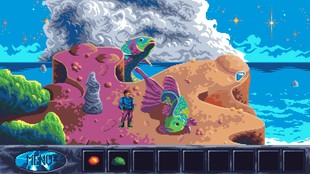
Oh, these things are decided pretty early on. It was clear to me from the start that Tachyon Dreams Anthology and Twilight Oracle would be comedies, and that Blood Nova would be a sci-fi game with a more somber tone. If you’re making a funny game, you know that from the beginning—same goes for horror, or anything else.
Your games so far have largely settled into either sci-fi or mystery thriller genres. What is it that appeals to you about both?
I’ve always loved the sci-fi genre. I’ve already mentioned Space Quest II being a favourite of mine. The game I’m about to release, Neon Hearts City, is a cyberpunk-themed detective mystery. I love weaving technology into puzzles and having its aesthetics shape the game world. I really enjoyed drawing its futuristic cityscape and modern / futuristic streets. It’s a refreshing change of pace from the more fantasy-focused setting of Twilight Oracle, let’s say.
Right, Neon Hearts City. In 80,263 words or less, describe Neon Hearts City for us.
Neon Hearts City is a cyberpunk-themed point-and-click adventure with pixel art graphics set in a dystopian future. The game explores the question: what makes us human? What happens if that essence can be stolen? Central to the narrative is the theme of memories—what becomes of us when they’re lost, and what lengths would we go to in order to reclaim them? The player controls a private detective, Elijah Crow, tasked with locating a missing girl who is in search of something crucial to her identity and sense of self. Fans of Blade Runner and VirtuaVerse will find themselves at home in this world.
For Cosmic Void fans, what can we expect to find similar to your previous games, and what new wrinkles might you have up your sleeve?
The puzzles are perhaps more intuitive and varied, but they still carry the same flair as puzzles from my previous games. I like the sort of puzzles that encourage players to think creatively or outside the box. They also need to tie in with the theme of the game and narrative. There’s a map to help navigate between locations. You play as a detective, much like in my freebie game Tommy Gun Witches, but this time it’s in third-person. As always, I’m using a vibrant, limited color palette, though the one I’m working with here is a bit broader than usual. You’ll get to explore a gritty future city, its rooftops, and backstreets.
This time around you’re working with a publisher. How did you come to be partners with Dionous Games for this one?
A game I’m really looking forward to is Theropods. (Definitely check it out!) When I saw that it was being published by Dionous Games, I decided to reach out to them and see if I could try my luck.
Having a publisher means there’s actually a budget for marketing, which is great—a first for me. They also helped cover most of the music and various other commissions. A separate fundraising campaign helped secure the voice-over. And as a bonus, they got the game onto GOG!
Having already played the demo, I’m really looking forward to checking out the full version of Neon Hearts City. You just partially answered my next question, but where and when can we find it?
Neon Hearts City releases on May 13th on Steam, GOG, and Itch!
Calendar marked! Now, normally I’m reluctant to ask a developer what’s next, but I’m half expecting you to say your next game is already almost finished! But seriously, what’s on the horizon for Cosmic Void?
I’m working on four games right now. One is another cyberpunk-themed point-and-click adventure, currently called The Gunman from Saturn. I’m also working on Maxwell’s Odyssey, a Metroidvania-style game, as well as Astral Duke, a 2D shooter similar to Streets of Rogue. On top of that, I’m focused on finishing Time Quest, an AGI adventure by Chad Goulding. This game is one of the reasons I got into game development. A few demos were released in the early 2000s, and after chatting with Chad for a while, he was kind enough to send me the source code and the game design document, and let me finish the game. I’m collaborating on this with a friend and fellow developer, Steven Don. Time Quest will be a freebie.
Only four? Come on, Aviv, stop slacking! But seriously, that’s impressive, and I better not keep you any longer. It’s been a pleasure chatting with you and getting to know the man behind the many adventures. Thanks so much for doing this. Any final words to leave our readers?
The adventure community is awesome and very supportive. And, don’t forget, if you fancy making your own adventure game, go ahead and dive in.
And... remember to grab Neon Hearts City when it comes out on May 13th and, please leave a review! :)
Really enjoyed this, thanks for having me!


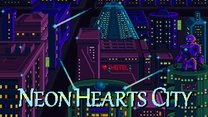
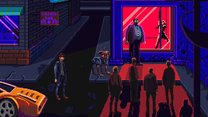
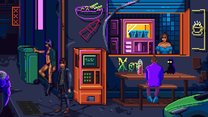

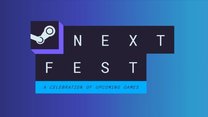
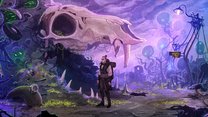
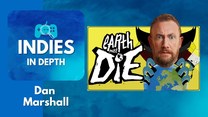
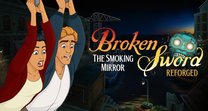
0 Comments
Want to join the discussion? Leave a comment as guest, sign in or register.
Leave a comment